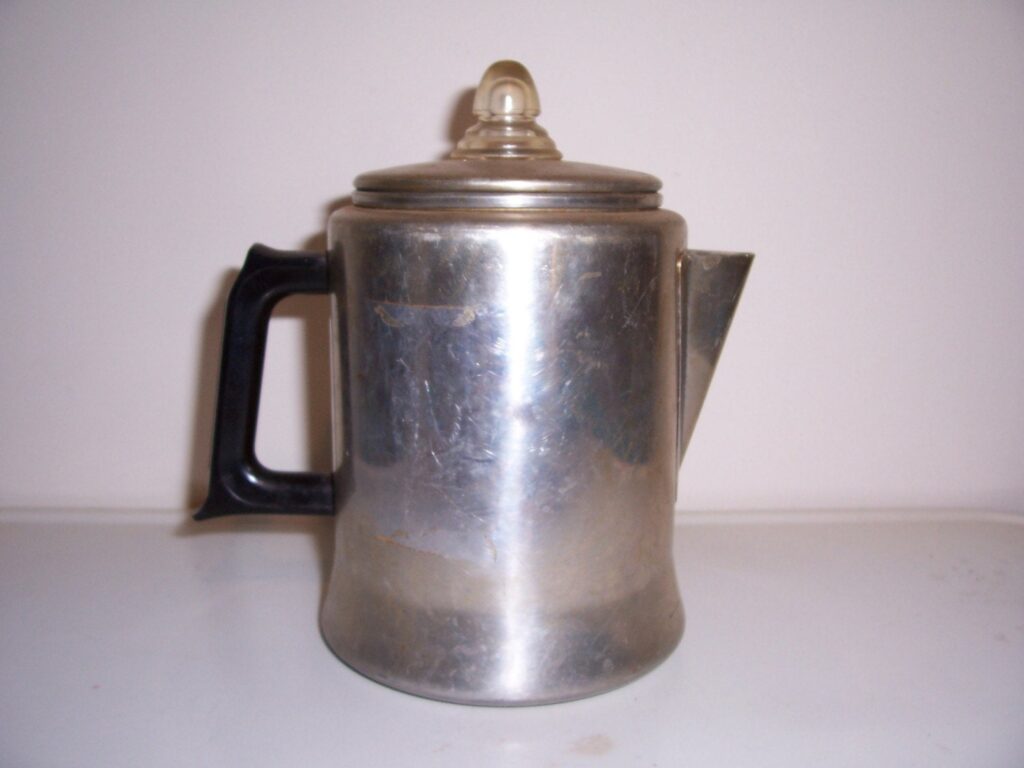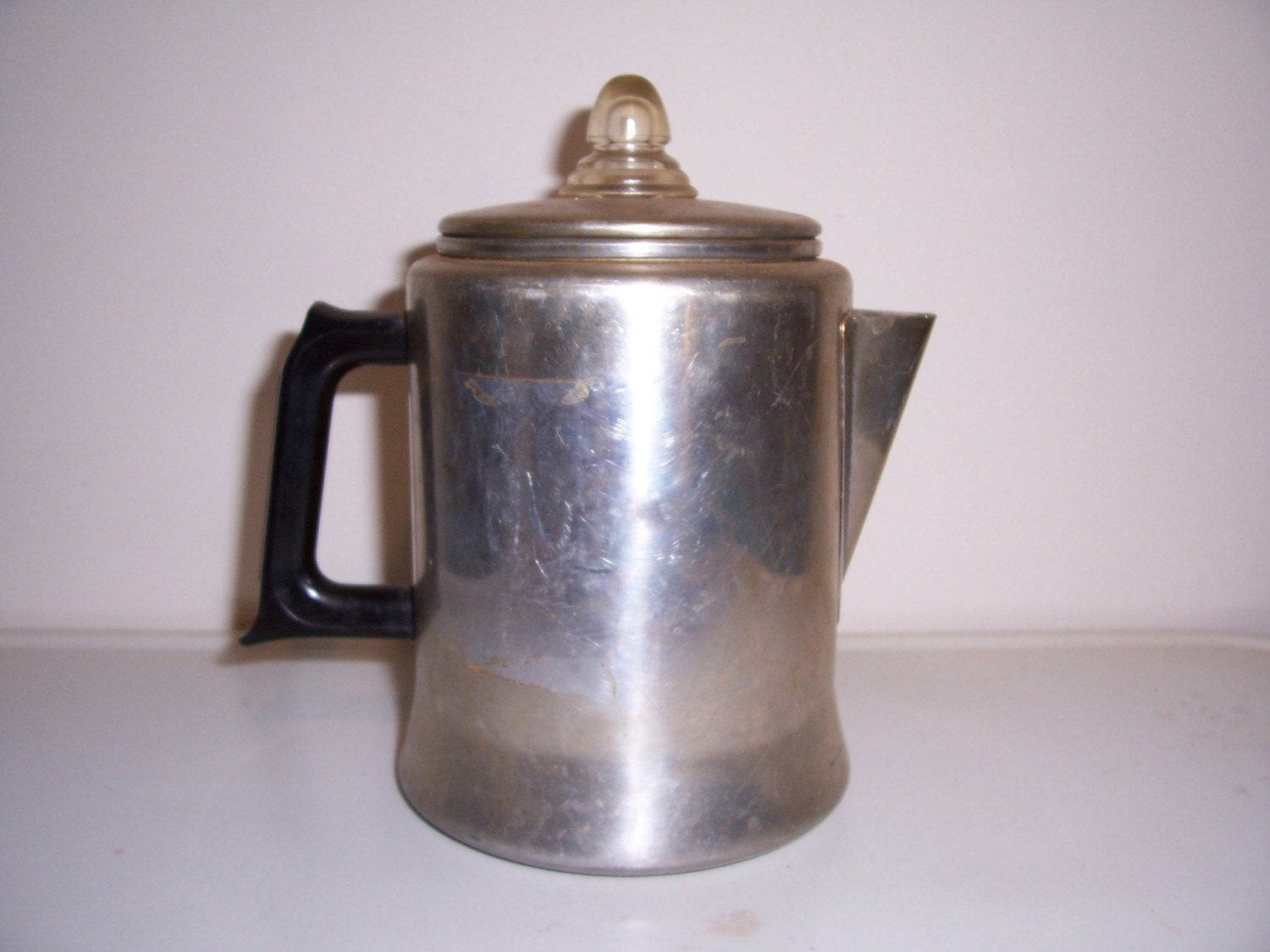
Brewing Brilliance: A Deep Dive into the Coffee Pot Stove Top Percolator
For generations, the aroma of freshly brewed coffee has been a morning ritual, a comforting constant in a world of change. And for many, the coffee pot stove top percolator has been the faithful vessel, the unsung hero of countless mornings. This article delves into the history, mechanics, advantages, and considerations surrounding this classic brewing method, providing a comprehensive guide for both seasoned coffee aficionados and curious newcomers.
The coffee pot stove top percolator offers a unique brewing experience. Unlike drip coffee makers that use a one-way brewing process, the percolator continuously cycles the water through the coffee grounds. This creates a robust, full-bodied brew, often described as having a bolder flavor profile than other methods. But what exactly is a coffee pot stove top percolator, and why has it endured for so long?
A Brief History of Percolation
The concept of percolation dates back centuries, with rudimentary methods employed long before the advent of modern appliances. The coffee pot stove top percolator, as we know it, gained popularity in the mid-19th century. Early models were often made of tin or enamelware and were a staple in kitchens across the globe. Their simplicity and portability made them ideal for camping, travel, and everyday use. The design evolved over time, with improvements in materials and manufacturing, but the fundamental principle of circulating hot water through coffee grounds remained the same.
The popularity of the coffee pot stove top percolator has waxed and waned over the years, often overshadowed by the rise of electric drip coffee makers and other specialized brewing methods. However, its enduring appeal lies in its simplicity, durability, and the distinctive flavor it produces. It represents a tangible connection to a simpler time, a reminder of the artisanal roots of coffee brewing.
Understanding the Mechanics of a Stove Top Percolator
The coffee pot stove top percolator operates on a simple yet ingenious principle: continuous circulation. The typical design consists of several key components:
- The Pot: This is the main container, usually made of stainless steel or aluminum, where the brewing process takes place.
- The Basket: A perforated basket sits inside the pot, holding the coffee grounds.
- The Stem: A hollow tube extends from the bottom of the pot, up through the center.
- The Lid: The lid often features a small glass or clear plastic knob, allowing you to monitor the brewing process.
The brewing process begins with filling the pot with water and placing the coffee grounds in the basket. As the pot heats up on the stove, the water at the bottom boils, creating steam that forces the water up through the stem. The water then showers over the coffee grounds, extracting the flavor and oils. The brewed coffee then drips back down into the main pot, where it is continuously recycled. This repeated process is what gives percolated coffee its characteristic boldness.
Advantages of Using a Stove Top Percolator
The coffee pot stove top percolator offers several advantages that make it a compelling choice for coffee lovers:
- Simplicity: The design is straightforward, with no complex mechanisms or electronic components. This makes it easy to use, clean, and maintain.
- Durability: Stove top percolators are typically made of robust materials like stainless steel, making them highly durable and long-lasting.
- Portability: Their compact design and lack of electrical requirements make them ideal for camping, travel, or any situation where access to electricity is limited.
- Flavor Profile: The continuous brewing process results in a bold, full-bodied coffee with a distinctive flavor that many coffee drinkers appreciate.
- Affordability: Compared to many other brewing methods, stove top percolators are relatively inexpensive, making them an accessible option for budget-conscious coffee enthusiasts.
Potential Drawbacks and Considerations
While the coffee pot stove top percolator offers many benefits, there are also a few potential drawbacks to consider:
- Over-Extraction: The continuous brewing process can lead to over-extraction, resulting in a bitter or harsh-tasting coffee if not monitored carefully.
- Temperature Control: Maintaining the correct brewing temperature can be challenging, as it depends on the heat of the stove.
- Sediment: Some sediment may pass through the filter, resulting in a slightly gritty texture in the final cup.
- Cleaning: Thorough cleaning is essential to prevent the buildup of coffee oils and residue, which can affect the flavor of future brews.
Understanding these potential drawbacks allows you to make informed choices and adjust your brewing technique accordingly.
How to Brew the Perfect Coffee with a Stove Top Percolator
Brewing a great cup of coffee with a coffee pot stove top percolator requires a few key steps and a little bit of practice:
- Grind the Coffee: Use a medium-coarse grind, similar to that used for drip coffee.
- Measure the Coffee: A general guideline is one to two tablespoons of coffee per six ounces of water, but adjust to your taste.
- Add Water: Fill the pot with fresh, cold water, ensuring the water level is below the basket.
- Insert the Basket: Place the basket with the coffee grounds into the pot.
- Heat on the Stove: Place the percolator on the stove over medium heat.
- Monitor the Brewing: Watch the clear knob on the lid. You should see the coffee percolating, indicating the water is circulating.
- Brew Time: Brew for approximately 5-7 minutes, or until the coffee reaches your desired strength. Avoid over-brewing, which can lead to bitterness.
- Remove from Heat: Once brewed, remove the percolator from the heat and allow the coffee to settle for a minute or two.
- Serve and Enjoy: Pour and savor your freshly brewed coffee.
Experimenting with different coffee-to-water ratios and brew times can help you find the perfect cup for your preferences. Using high-quality coffee beans and fresh, filtered water will also significantly improve the flavor.
Choosing the Right Coffee Pot Stove Top Percolator
When selecting a coffee pot stove top percolator, consider the following factors:
- Material: Stainless steel is a durable and popular choice, while aluminum is lighter and more affordable.
- Capacity: Choose a size that suits your brewing needs, from single-serve models to larger pots for multiple cups.
- Features: Some percolators have built-in filters or handles that stay cool to the touch.
- Brand Reputation: Research different brands and read reviews to find a reliable and well-regarded percolator.
Investing in a quality percolator can be a worthwhile investment for years of enjoyable coffee brewing.
Beyond the Basics: Tips and Tricks
To elevate your percolating experience, consider these tips:
- Preheating: Preheating the water before placing the pot on the stove can help control the brewing temperature.
- Water Quality: Always use fresh, filtered water for the best flavor.
- Coffee Quality: Use high-quality, freshly roasted coffee beans.
- Cleaning Routine: Clean your percolator thoroughly after each use to prevent residue buildup.
- Experimentation: Don’t be afraid to experiment with different coffee-to-water ratios, grind sizes, and brew times to find your perfect cup.
By incorporating these tips, you can maximize the potential of your coffee pot stove top percolator.
The Enduring Legacy of the Stove Top Percolator
The coffee pot stove top percolator represents more than just a brewing method; it symbolizes a connection to coffee history and a simpler way of life. Its enduring appeal lies in its simplicity, durability, and the unique flavor it produces. While other brewing methods have come and gone, the percolator remains a beloved choice for many coffee drinkers, a testament to its timeless design and reliable performance. The coffee pot stove top percolator continues to offer a satisfying and affordable way to enjoy a rich, flavorful cup of coffee. Its legacy is secure, and its future remains bright for those who appreciate the art of a perfectly brewed pot.
[See also: The Ultimate Guide to French Press Coffee]
[See also: Exploring Cold Brew Coffee: A Refreshing Guide]
[See also: How to Choose the Best Coffee Beans for Your Taste]


